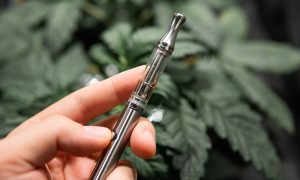
One such molecule is cannabidiol (CBD), derived from the cannabis plant, a non-psychoactive compound that has attracted worldwide interest as an anti-anxiolytic agent in recent years. CBD gummies have since gained popularity with people struggling to mitigate anxiety without a resulting high, as they offer an easily consumable method of intake that is relatively covert. Understanding the science of how cbd gummies for anxiety interacts in the human body gives us a clue as to how these gummies can help ease symptoms of anxiety.
The Science Behind How CBD Works in the Endocannabinoid System (ECS)
The endocannabinoid system (ECS) of our body is responsible for managing a wide range of physiological functions, which include mood, stress and anxiety. Numerous receptors, including CB1 and CB2, populate the central and peripheral nervous systems, constituting the ECS. This indirectly affects these receptors to moderate the ECS functionality, affecting how we achieve body balance, or homeostasis.
Research is indicating that CBD may work by enhancing the availability of endogenous cannabinoids, including anandamide, easing anxiety and promoting relaxation. Moreover, CBD suppresses the enzyme fatty acid amide hydrolase (FAAH) that degrades anandamide, which keeps its sedative properties last longer.

The impact of CBD on stress-related brain receptors is significant.
Beyond its impact on the ECS, CBD also influences serotonin receptors and is one of the 5-HT1A-targeting forms. Serotonin, a neurotransmitter that aids in mood regulation, has a strong relationship with anxiety disorders. CBD agonizes the 5-HT1A receptor, thereby increasing serotonin signaling, which helps to mediate this fear and anxiety response.
Research on both clinical and preclinical cbd gummies for anxiety suggests they may reduce anxiety. Despite the need for further research to fully understand the mechanisms, current scientific evidence suggests CBD could be a promising candidate for modulating ECS and 5-HT (serotonin receptors) due to its lack of psychoactive properties.












